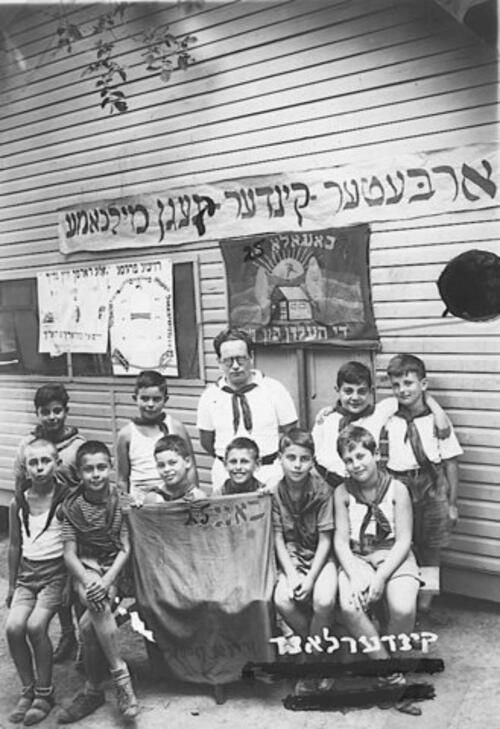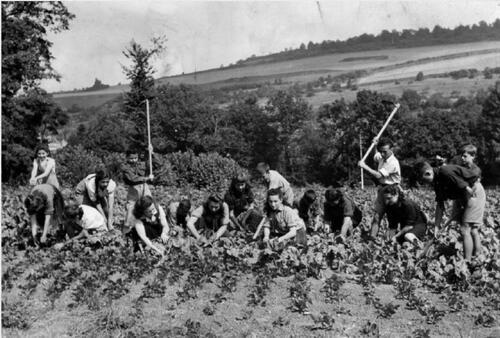Camping and Workers
Introduction
As you read through the documents, keep these general questions in mind:
- What makes a person independent?
- What words or phrases do the authors/narrators use to describe their identities as workers?
- How do the workers in these texts form their American Jewish identities? Point to specific examples.
Camp Kinderland, Bunk 25
The campers of Bunk 25 at Camp Kinderland.
Courtesy of Linda Rogers.
Published with permission from Camp Kinderland.
Discussion Questions
- This is a picture of “Bunk 25” at Camp Kinderland in the1940s, a secular Jewish camp. The sign over the campers’ heads is in Yiddish and says “Arbeter Kinder Kagan Milchama” or “Worker Children Against War.” What do you observe in the picture?
- Based on what you see in the picture, what do you think are some of the goals of Camp Kinderland?
- What kind of identity do you think the founders of the camp and the parents of the campers wanted for the children? Why do you think these values were important to the parents and camp founders?
Workers at Camp Kinder Ring, Sylvan Lake, New York
Workers tend the vegetable garden at Camp Kinder Ring in Sylvan Lake, New York.
Courtesy of Camp Kinder Ring.
Courtesy of Camp Kinder Ring.
Discussion Questions
- Why would working class, urban, Jewish parents want their children to have a summer camp experience in the country?
- What do you think was the intention of the Arbeter Ring camp in having the children perform agricultural tasks? How do you think this relates to secular Jewish identity?




